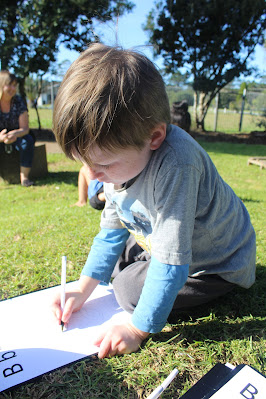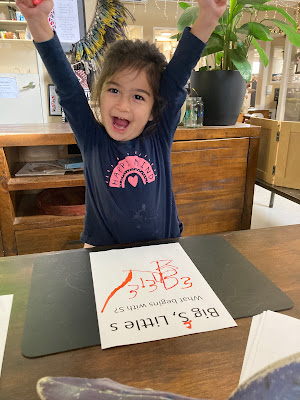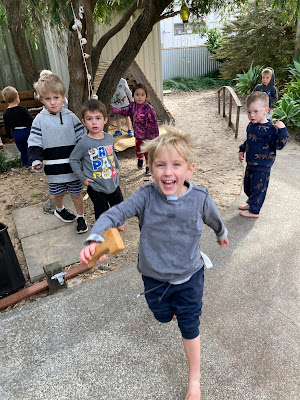Here at Bream Bay Kindergarten we love a healthy competition.
We have a focus on oral language and literacy and our recent fun has come from a phonics game we made up to explore phonics called "Big T, little t, what begins with T?"
The name of the game is to choose a letter and mimic the sound of that letter and then begin to think of things that begin with that sound. For example the letter T, we might think of someone whose name begins with the T sound, or a toy that begins with the T sound, or even something at home or on the farm. All the while sounding out the letter and trailing ideas together.
"Phonics is a way of teaching children how to read and write and learning phonics through play is the best way to teach the concepts. It helps children hear, identify and use different sounds that distinguish one word from another. Phonics involves matching the sounds of spoken English with individual letters or groups of letters" (earlyeducationzone).
Learning opportunities like this can be called emergent literacy. Emergent literacy has been defined as "those behaviours shown by very young children as they begin to respond to and approximate reading and writing acts." However, literacy goes beyond reading and writing. It encompasses "the interrelatedness of language: speaking, listening, reading, writing, and viewing."
"An effective learning through play programme enables children to engage in self directed play that is internally motivated. Teachers can support children in play-based learning by providing an enabling environment and sensitive interaction. There is a role for the teacher to discuss, embed and extend the learning with students" (TKI, 2019).
What does that look like here at Bream Bay Kindergarten? In this instance we generate interest and draw tamariki in to play this literacy game. Over a period of time we seek out different words that begin with the same sound....ideally we run through all letters of the alphabet. But making sure we stick with them long enough for the children to have the opportunity to grasp the concepts and explore the phonetical opportunities presented by their peers and kaiako...learning through play.
"Knowledge of the alphabet and phonological awareness play a crucial role in the early years. Both are necessary, but neither are individually sufficient to support children’s literacy learning. Each has a different role, but together they form the basis of the alphabetic principle, which is the understanding that speech sounds in words are represented by graphemes in print. The combined knowledge means children can use letters and sounds to make phonemically correct representations of words in reading and spelling on school entry. The differences in levels of knowledge and awareness that children have in early childhood education can impact on how easily they learn to read at school" (White, A. 1996).
Alphabet hide and seek
Throughout the kindergarten day tamariki embrace conversation and learning opportunities to explore the letters and sounds and then in the afternoon, teachers hide the letter and something relevant starting with that letter. Children then begin their mission to find the missing items...to be the winner with the most points! (Which leads us to numeracy learning...but that's for next time).
We know that whanau, teachers and peers all play an important role in supporting children’s early literacy development.
"Communication encompasses oral language and social interaction, including the understanding and use of spoken words (receptive and expressive language) as well as non-verbal aspects of communication such as body movements, gestures and facial expression. Communication also involves the sounds used in language (phonological awareness)" (White, A. 1996).
Hence the importance of embracing even the most simple of opportunities to create lifelong learning connections and communication opportunities with tamariki.
As children seek to find words that match their letter, they test and grow their working theories. That is, their ideas and understandings about the sounds they hear and their growing knowledge of letters and the connections between the two.















No comments:
Post a Comment